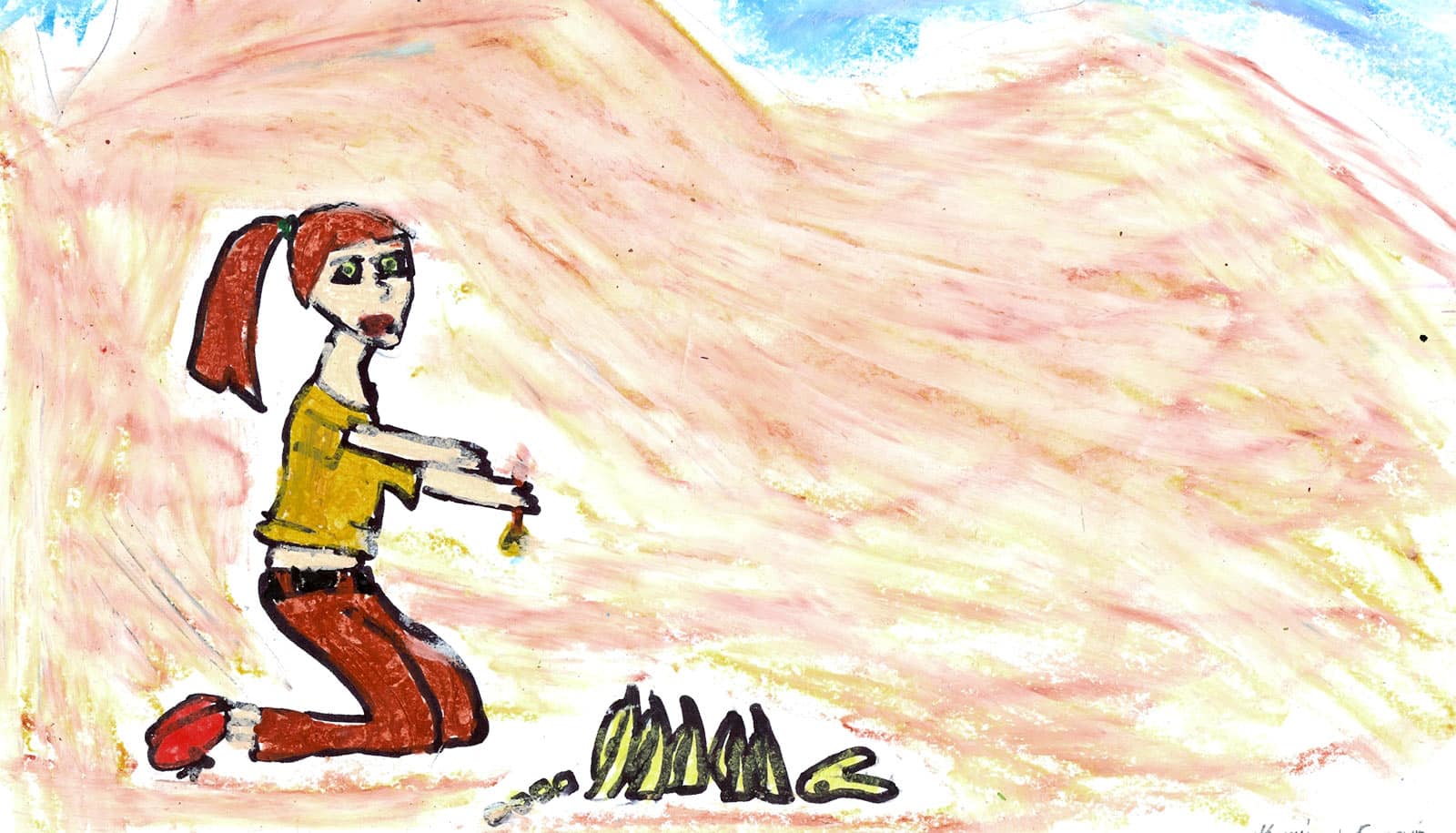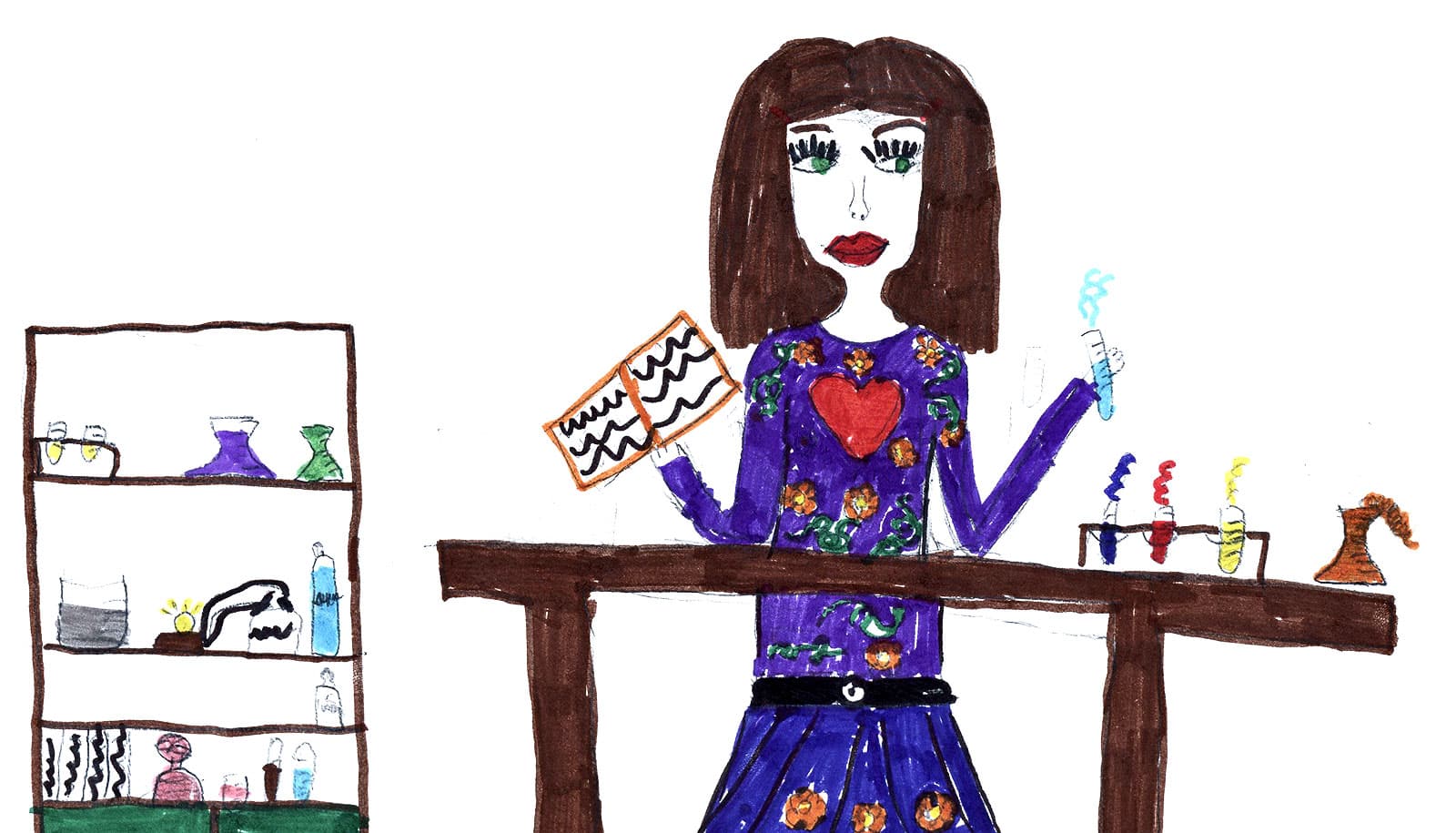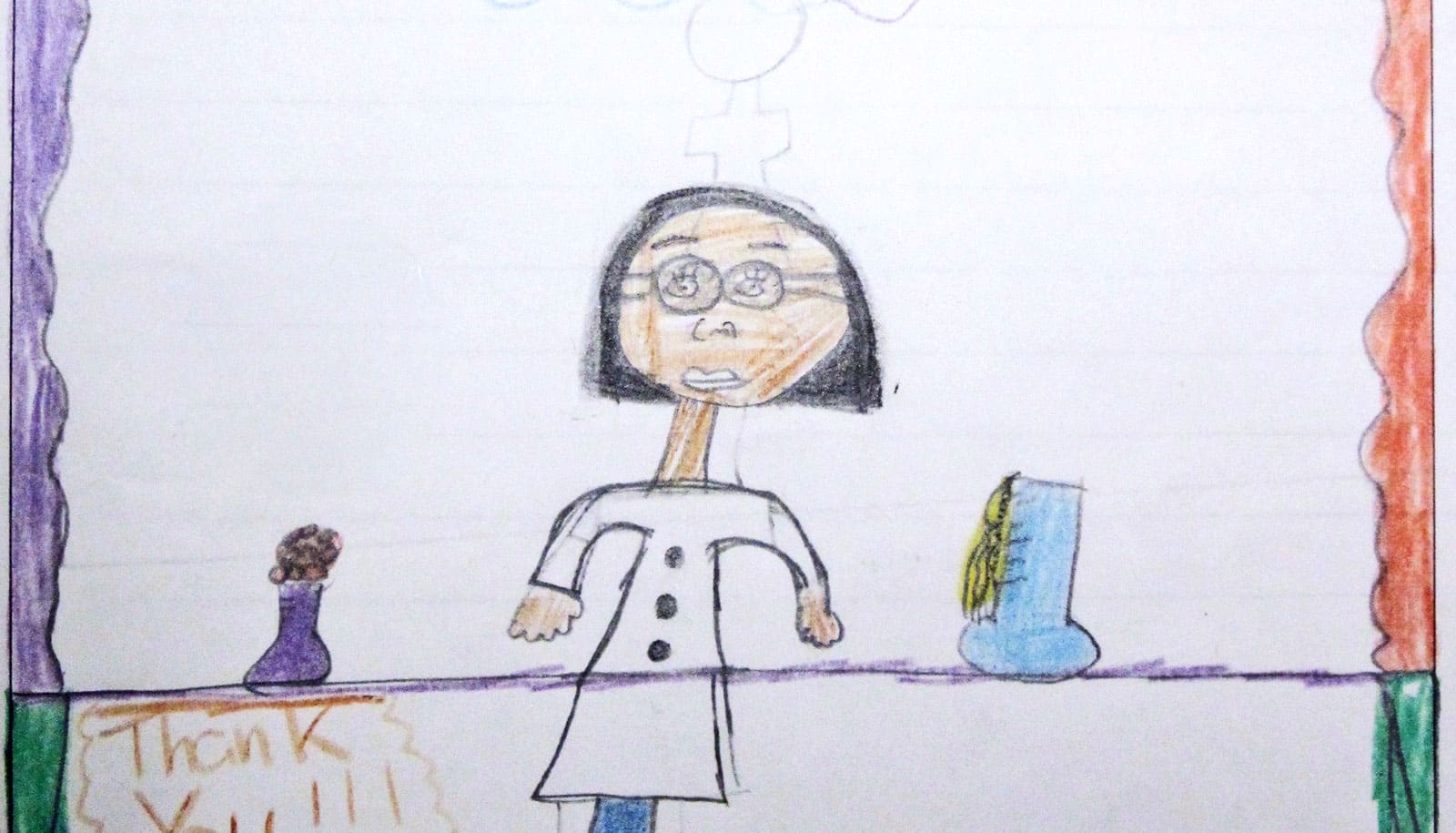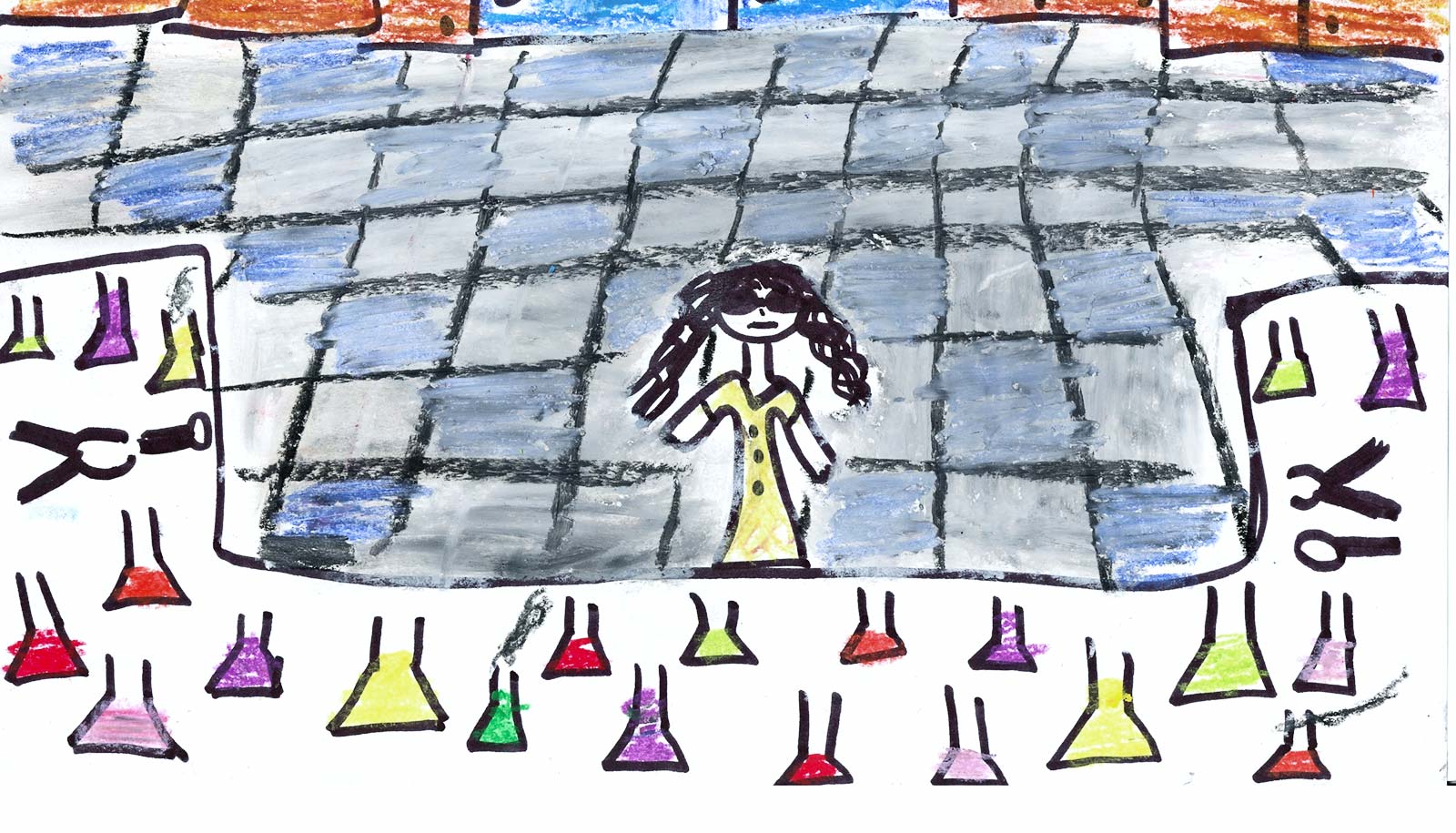When drawing scientists, US children now depict women more often than ever, an analysis of five decades of “Draw-A-Scientist” studies conducted since the 1960s shows.
The change suggests that children’s stereotypes linking science with men have weakened over time, the researchers say, consistent with more women becoming scientists and children’s media depicting more female scientists on television shows, magazines, and elsewhere.
“Given this change in stereotypes, girls in recent years might now develop interests in science more freely than before,” says David Miller, a psychology PhD candidate at Northwestern University and lead author of the paper that appears in Child Development.

“Prior studies have suggested that these gender-science stereotypes could shape girls’ interests in science-related activities and careers.”
The study is the first systematic, quantitative review of the “Draw-A-Scientist” literature and combined results from 78 US studies, including more than 20,000 children in kindergarten through 12th grade.
In the first landmark study, conducted between 1966 and 1977, less than one percent of nearly 5,000 children drew an image resembling a woman when asked to draw a scientist. Their artwork almost exclusively depicted men working inside with laboratory equipment, often with lab coats, glasses, and facial hair.

But in later studies (1985 to 2016), 28 percent of children drew a female scientist, on average. In addition, both girls and boys drew female scientists more often over time, though girls overall drew female scientists much more often than boys.
“Our results suggest that children’s stereotypes change as women’s and men’s roles change in society,” says coauthor Alice Eagly, professor of psychology and a faculty fellow with the Institute for Policy Research. “Children still draw more male than female scientists in recent studies, but that is expected because women remain a minority in several science fields.”
Further, researchers explored how children form stereotypes about scientists over time and discovered that children don’t associate science with men until grade school; around age 5, they drew roughly equal percentages of male and female scientists.

During elementary and middle school, the tendency to draw male scientists increases strongly with age. Older children were also more likely to draw scientists with lab coats and glasses, suggesting that children learn other stereotypes as they mature.
“These changes across children’s age likely reflect that children’s exposure to male scientists accumulates during development, even in recent years,” says coauthor David Uttal, a professor of education and psychology at Northwestern.
Can robots convince girls they’re good at STEM?
“To build on cultural changes, teachers and parents should present children with multiple examples of female and male scientists across many contexts such as science courses, television shows, and informal conversations.”
Source: Northwestern University



